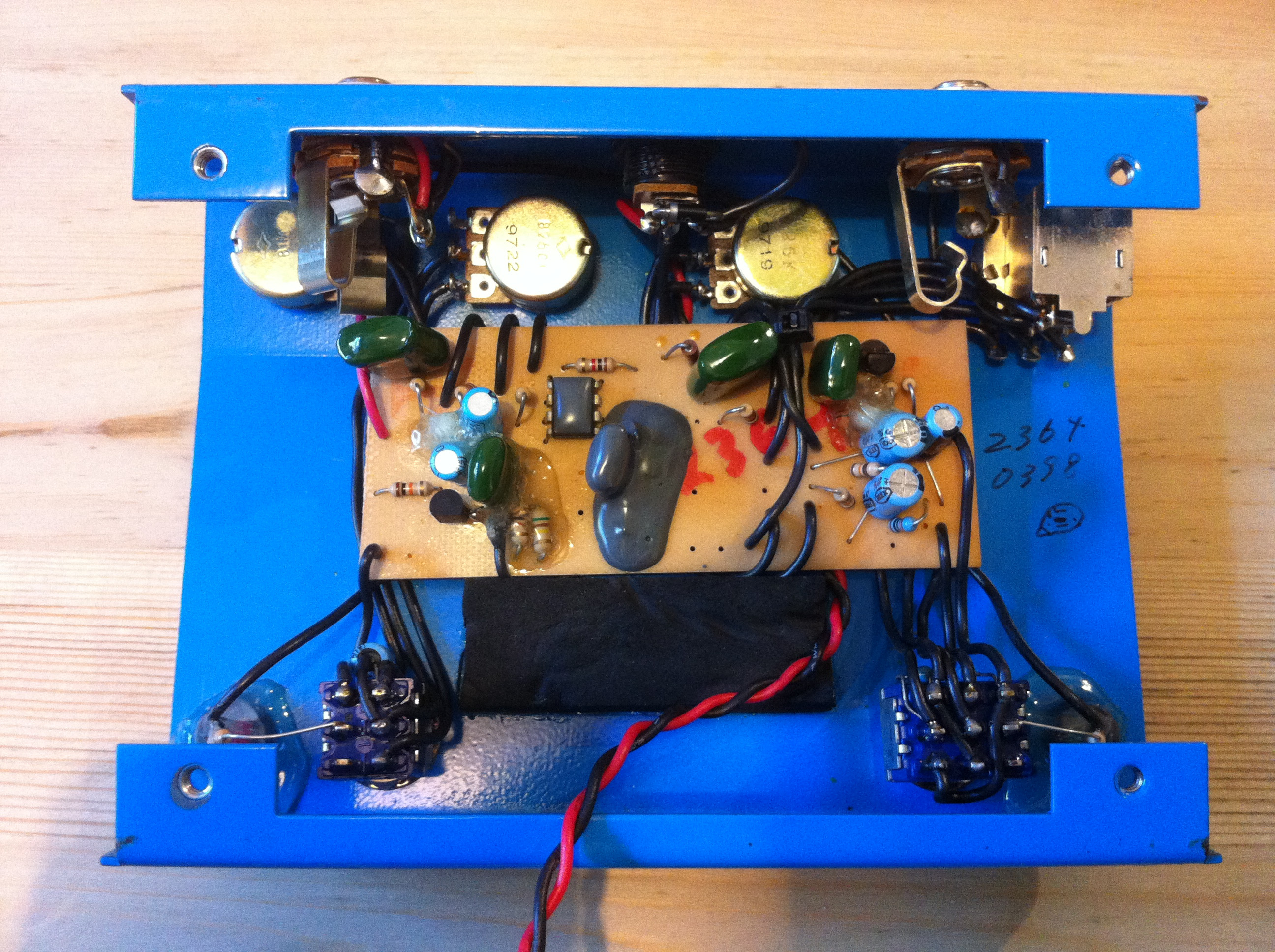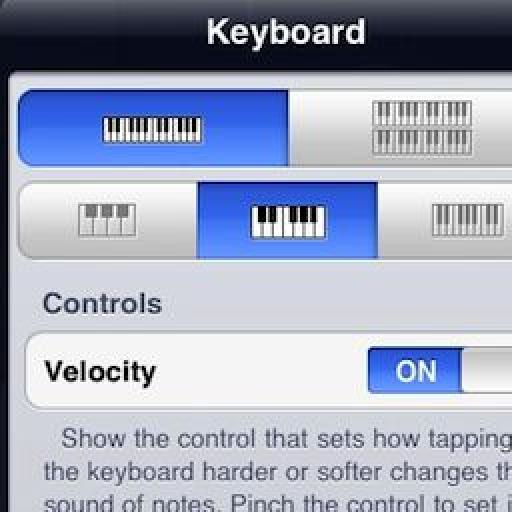Use Ipad As Garageband Controller
- Garageband For Ipad App
- Use Ipad As Garageband Controller For Windows 10
- Use Ipad As Garageband Controller 1
- Use Ipad As Garageband Controller Free
Play keys.
The first thing you should check out in the Logic Remote app is the control bar at the top of the interface. The center display shows the playhead location, the track name, and the track number. You can navigate through the track list with the arrows on either side of the display.
Tap the view icon to navigate to different views, including the touch instruments, mixer, smart help, and key commands. The View menu is dynamic and gives you options based on the selected track.
Tap the library icon to open the patch library. From the Patch Library menu, you can access your entire Logic Pro library and choose new patches for the currently selected track. Logic Remote does its best to recognize the instrument you load and give you the right tools for the job. The Logic Remote smart controls give you cool-looking interfaces that are easy to use and fun to play.

55' flat screen tv, about $450. Apple TV (for wireless display connection ipad tv) drawing app, about $10. Garageband for ipad, $0. The idea being everything (except power) would be connected to the ipad wirelessly, including a big tv (they currently have a CRT, yeap). If you’re on iOS, GarageBand is a great app to test with as it supports a wide range of Bluetooth MIDI devices. On OSX, any DAW or virtual instrument that supports MIDI will do. Open up the app, and you should be able to select your MIDI device from whatever preferences menu. Jul 15, 2013 Logic Remote is a companion app for Logic Pro X on the Mac. It provides an innovative way to extend the creative power of Logic by using your iPad. Designed to take full advantage of Multi-Touch on iPad, Logic Remote offers new ways to record.
Play guitar.
If you’re a guitar player, you may prefer to play all Logic Pro software instruments by using a fretboard on your iPad. If you’re not a guitar player, the fretboard is easy to learn (tap the frets to play notes), and frets can inspire you to play differently. You can drag the strings up or down to bend notes, just like on a guitar. You can also play with chord strips.
To view the chord strips, tap the view icon and choose the chord strips. Tap the top of the chord strip to play all six strings at once. You can tap any individual string to play it or swipe up and down along the chord strip to simulate strumming.
Play drums.
Logic Remote turns your iPad into an easy-to-use beat maker. With an Ultrabeat track selected, you can view a large screen of 24 drum pads. With a Drum Kit Designer track selected, you can choose the kit view. The drums are touch-sensitive. If you tap a drum with two fingers, it plays repeating notes (great for hi-hat), and as you spread your fingers apart, the pattern gets faster (great for drum rolls).
Play drums.
Logic Remote turns your iPad into an easy-to-use beat maker. With an Ultrabeat track selected, you can view a large screen of 24 drum pads. With a Drum Kit Designer track selected, you can choose the kit view. The drums are touch-sensitive. If you tap a drum with two fingers, it plays repeating notes (great for hi-hat), and as you spread your fingers apart, the pattern gets faster (great for drum rolls).
Edit tracks and your arrangement.
Editing is often filled with repetitive tasks. When you find yourself choosing the same menus and functions over and over again, open the key commands view and add a customized key command.
Use your iPad mixing console.
Tap the view icon and choose the mixer, which is worth the entire price of the iPad. The mixer shows you level meters; icons for automation, record, mute, and solo; pan knobs; faders; and the track names and numbers. You can swipe across the track names or meters to show different groups of faders. To view effects sends in the mixer, tap the Sends 1–4 icon beside the master fader.
Command Logic Pro.
Tap the settings icon to open the edit and track submenus. On this menu, you can undo and redo edits, create and duplicate tracks, adjust the velocity range of the touch instruments, and open Logic Remote Help.
Command Logic Pro.
Tap the settings icon to open the edit and track submenus. On this menu, you can undo and redo edits, create and duplicate tracks, adjust the velocity range of the touch instruments, and open Logic Remote Help.
Garageband For Ipad App
Navigate Logic Pro.
The control bar display shows you the location of the playhead in musical time or clock time, depending on the general project settings. Tap the control bar display, and a ruler opens below the control bar. Swipe left or right in the ruler or display area to move the playhead.

Sketch songs with GarageBand.
You can start any project in GarageBand for iOS (iPhone, iPad, or iPod touch), import it to GarageBand on your Mac to work on it a little more, and then import it to Logic Pro.
The workflow is smooth. One benefit of using all three apps is that you have a version of the project saved on your iOS device, in your GarageBand projects folder, and in your Logic Pro projects folder. Redundant backups will save the day.
Import iPad audio.
GarageBand for iOS is capable of recording other music applications on your device through Inter-App Audio. Many iOS apps support the Inter-App Audio protocol. It’s a great way to get audio from your third-party synths and drum machines into GarageBand and, eventually, into Logic Pro.
You can also use third-party audio effects via Inter-App Audio. Some fantastic sounding guitar amp simulators can be used as an effect on your audio tracks. Recording apps into GarageBand for iOS and then importing projects to your computer is a simple and effective way to get the most from your iPad, GarageBand, and Logic Pro X.
With the exception of a few dedicated iOS-specific models, most MIDI controller keyboards require another piece of hardware to be placed in between them and your iOS device in order for your Core MIDI apps to recognize and respond to your MIDI controller. You have a few different ways you can go.
Use Ipad As Garageband Controller For Windows 10
iOS MIDI interface
One way to go is to purchase a dedicated iOS MIDI interface, or an iOS audio-and-MIDI interface that gives you microphone or guitar connections (or both) in addition to a MIDI connection. Examples of audio-and-MIDI interfaces on the market include the IK Multimedia iRig PRO, the Alesis I/O Dock II, and the Behringer iS202.
If you only need MIDI and don’t plan on recording audio, a dedicated iOS MIDI interface is an economical way to go, and more are being released all the time. For instance, the new IK Multimedia iRig MIDI 2 gives you the option of Lightning and 30-pin connections for iOS, or USB connections for Mac and PC. It features MIDI in, out, and thru ports.
Support for multi-channel USB audio interfacesBuilt for Windows 10. External Mixer Mode. Support for Touch + Desktop.  Native UWP application. 60 frames per second graphics engine.
Native UWP application. 60 frames per second graphics engine.
Use Ipad As Garageband Controller 1
If you want to have the option to set up a multi-machine setup with four MIDI ins and four MIDI outs, and the ability to pass audio from one machine to the next, you might consider iConnectivity’s new iConnectMIDI4+, which, with all its capabilities, sells only for about $200.
Use Ipad As Garageband Controller Free
To connect a controller keyboard with an iOS interface, first connect the interface to your iOS device’s dock port. Next, plug the keyboard’s MIDI out to the MIDI in on the interface using either a standard MIDI cable or a cable that comes with the unit, depending on the interface you have. The keyboard’s MIDI out is where messages coming from the keyboard — including note-ons and note-offs, CC data, and more — are sent.
The interface’s MIDI in port takes that data and brings it into your iOS device and makes it available for your app.
Before MIDI came along, synthesizers used control voltage (or CV) to pass messages like notes and performance data between different devices. CV isn’t common to iOS interfaces yet, but some enterprising souls allow you to pass MIDI to digital devices and CV to analog devices for some truly impressive synth rigs. If you feel like geeking out, check out apps like Brute LFO and buy the cable you’ll need (one end should be the standard headphone to plug into the phone, and the other end whatever the analog synth accepts).
Connecting controllers to iOS devices using USB
Another option for plugging in an external keyboard is to use a standard USB MIDI controller. “But wait, there’s no USB port on an iOS device,” you say. This is technically true, but you can add one very easily with Apple’s inexpensive Lightning-to-USB-camera adapter, for Lighting-equipped devices, or the Camera Connection Kit for iOS devices with 30-pin dock connectors.
When you do this, the MIDI controller world is your oyster, as you can choose from a large selection of USB MIDI interfaces.
In order to work with Apple’s Core MIDI, a USB MIDI controller must be USB Class Compliant, which means that it’s designed to work with your iOS device (or a computer) without the need to install a software driver. If driver installation is required, it won’t work on your iOS device.
A large percentage of USB controller keyboards are USB Class Compliant, and some even advertise themselves as being iOS compatible, if you use one of the Apple camera adapters.
Do your research and make sure your USB MIDI controller will work with iOS devices. Manufacturers who do produce compatible equipment will usually fall over themselves advertising this fact.
One more big advantage of connecting via USB to your iOS device is that you don’t need to plug a power adapter into the keyboard; it will be bus powered, which means it gets its power through the USB cable. As a result, you can connect your MIDI keyboard in places where there’s no AC power available — as long as your iPad’s battery is charged. However, longer chains of devices or larger devices might still need a separate power source — do your research and test first.
